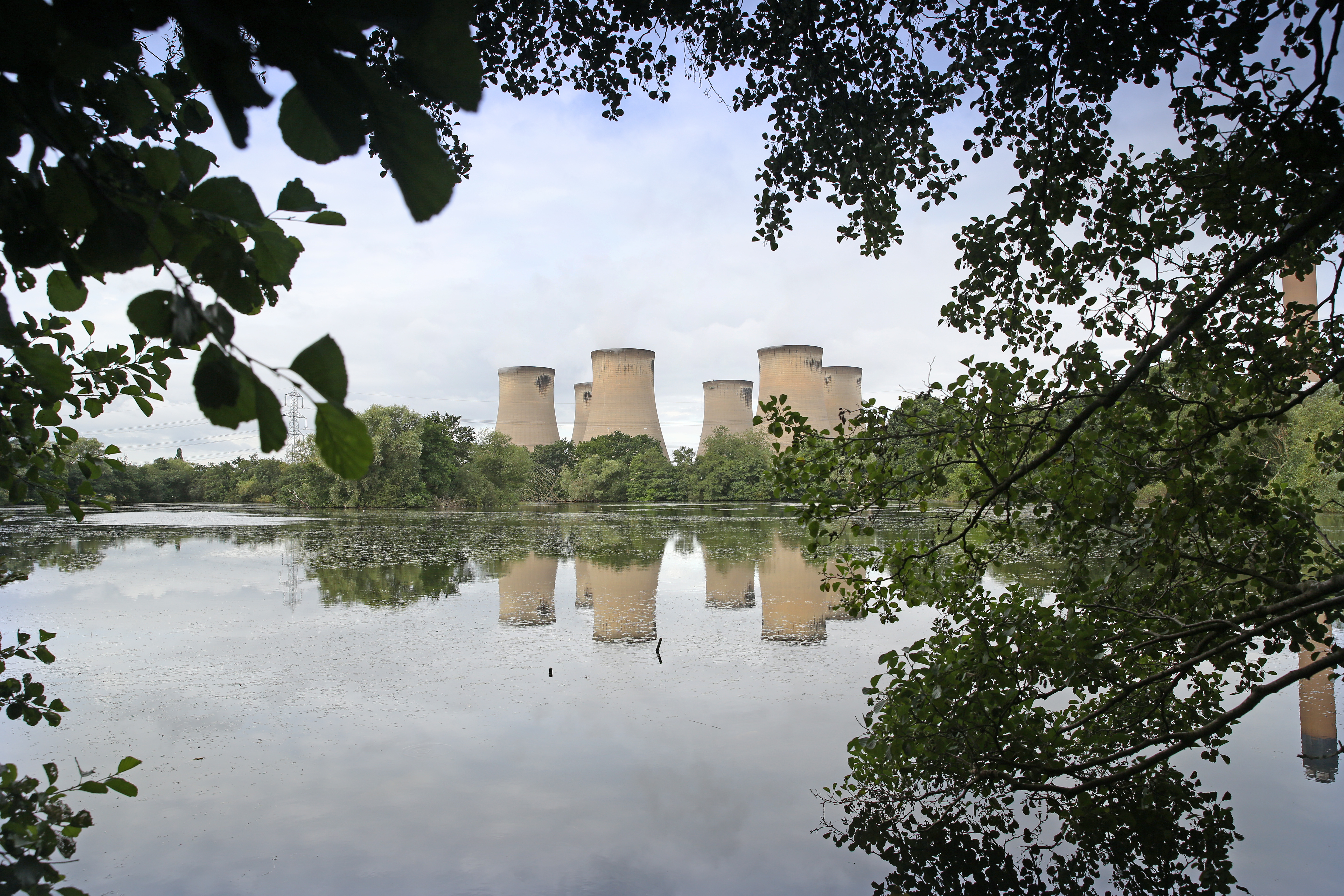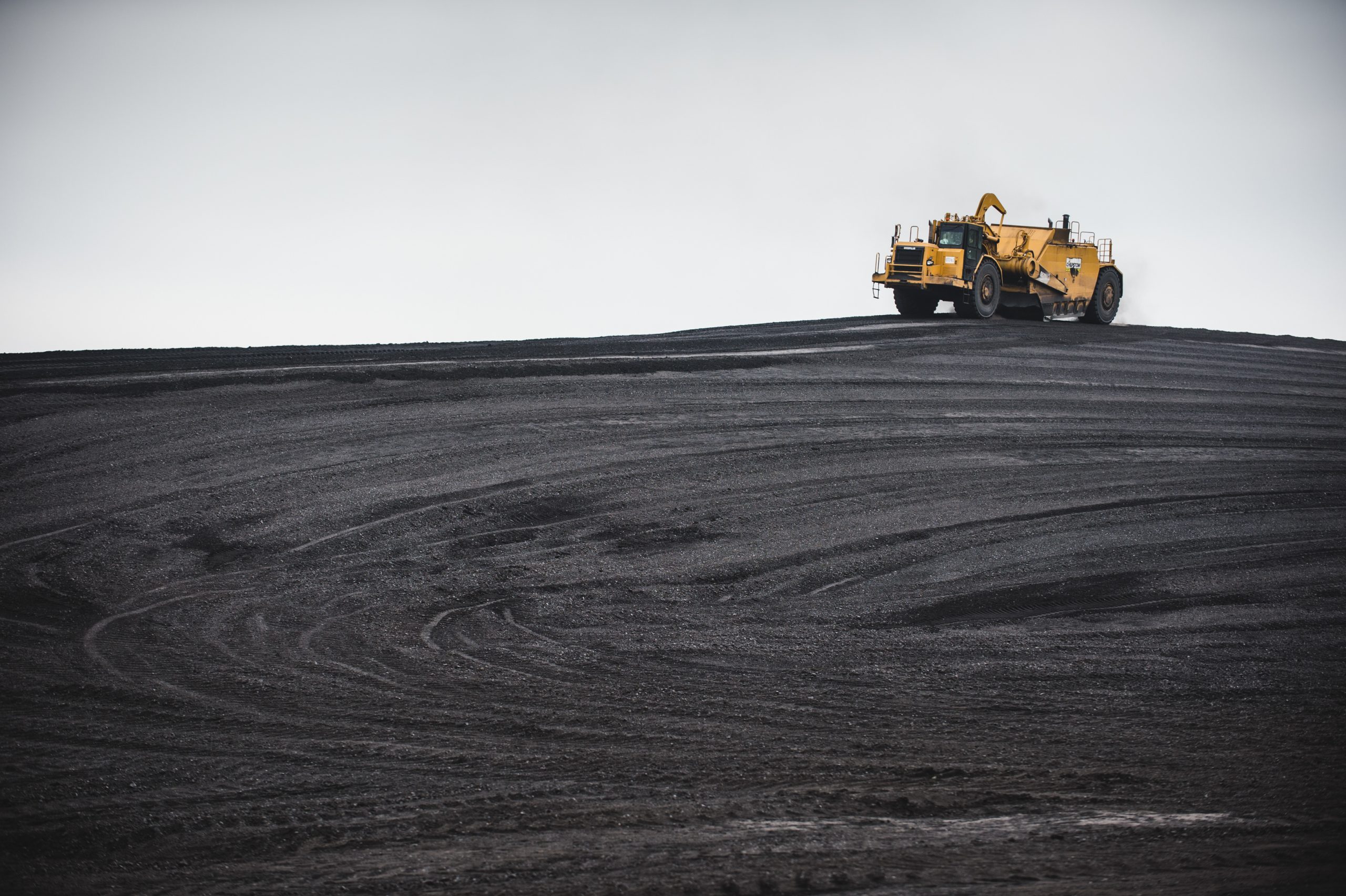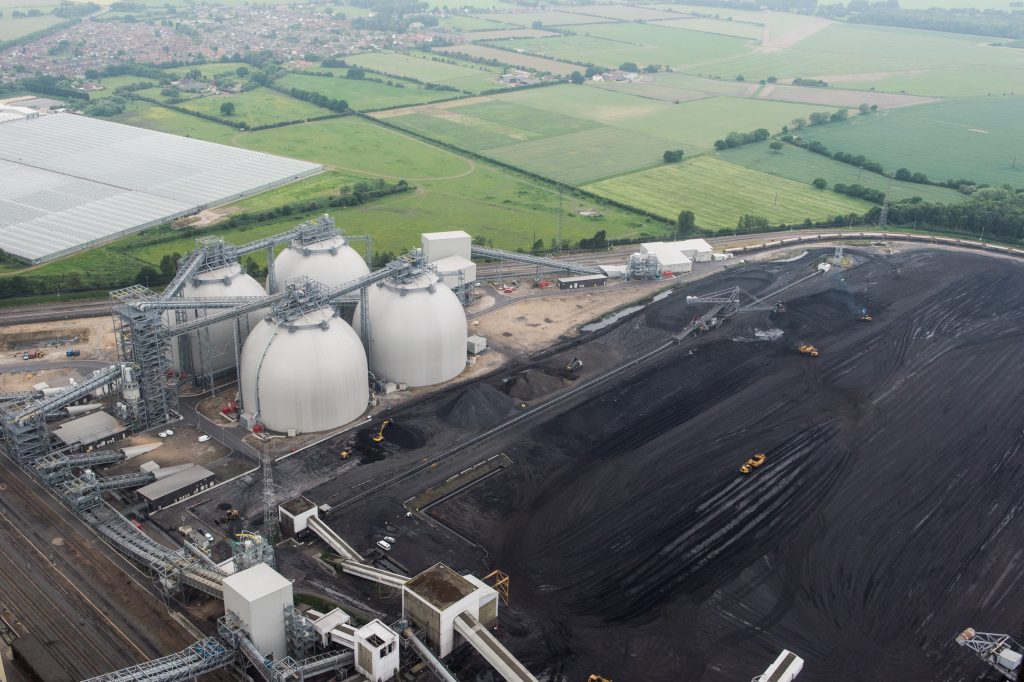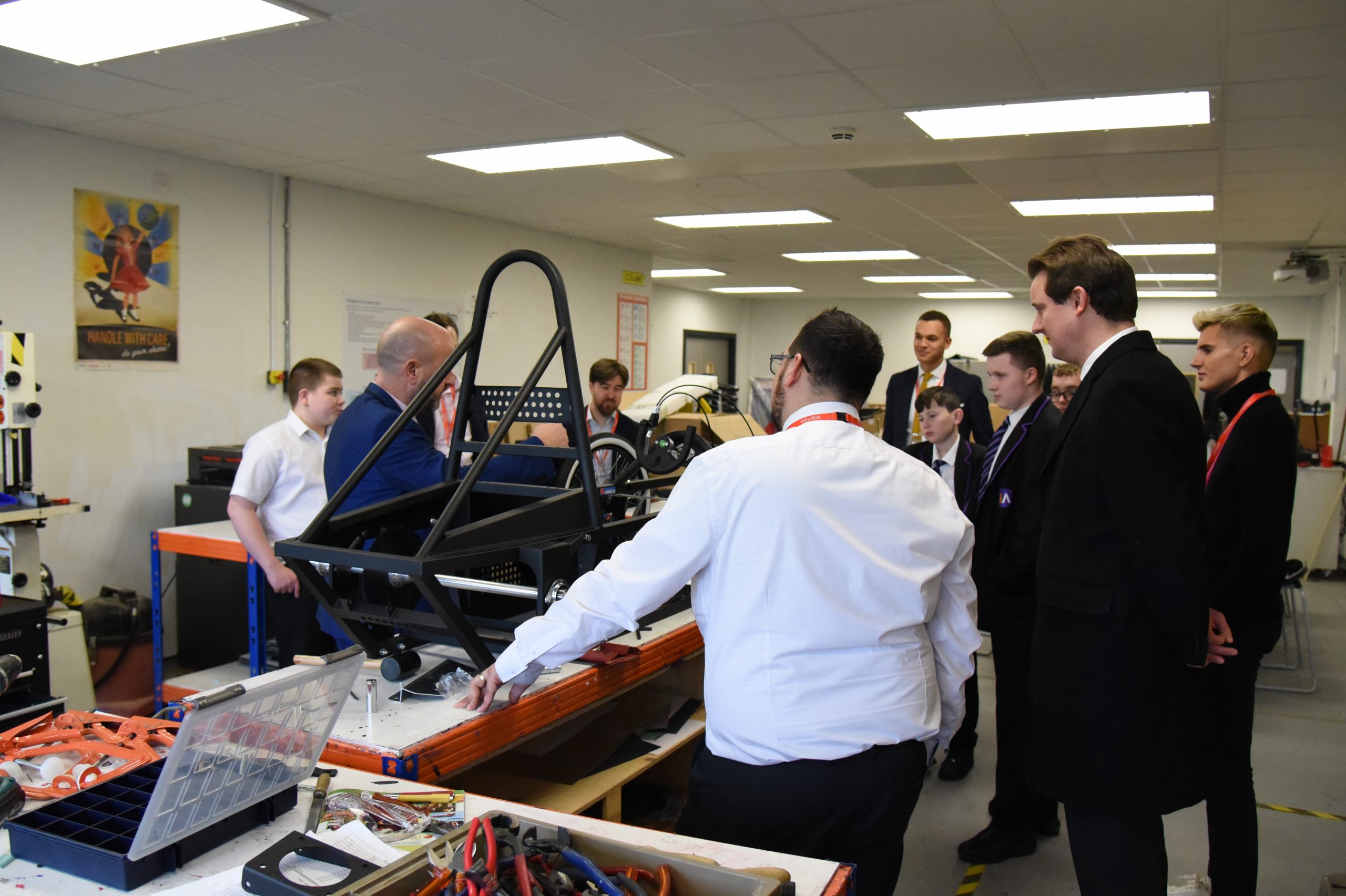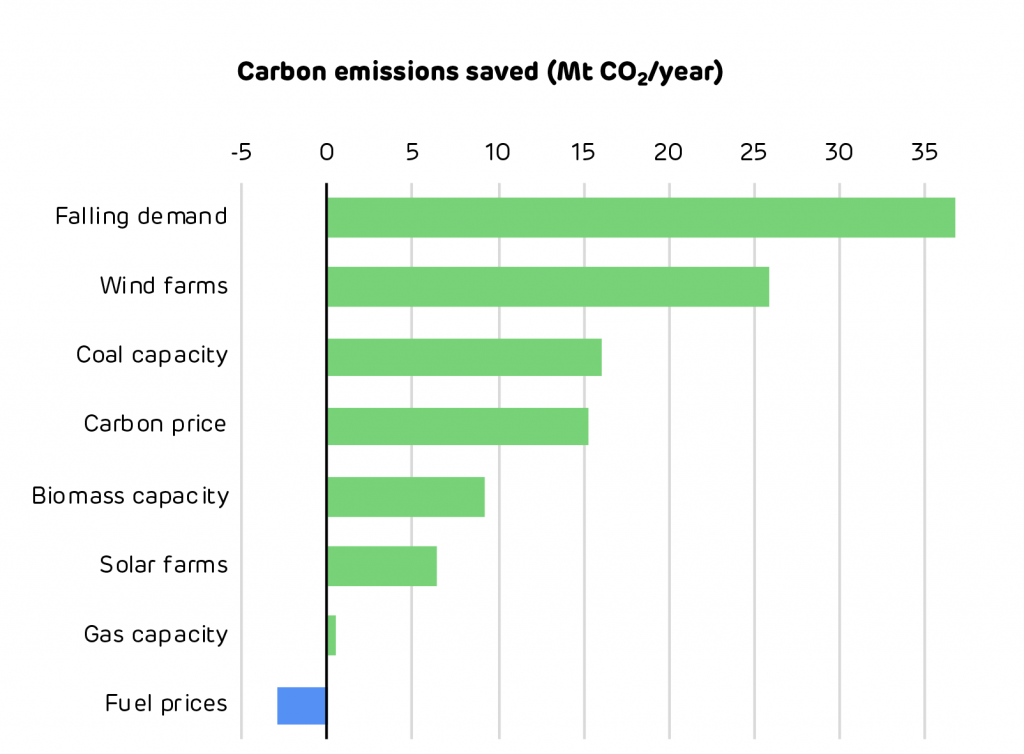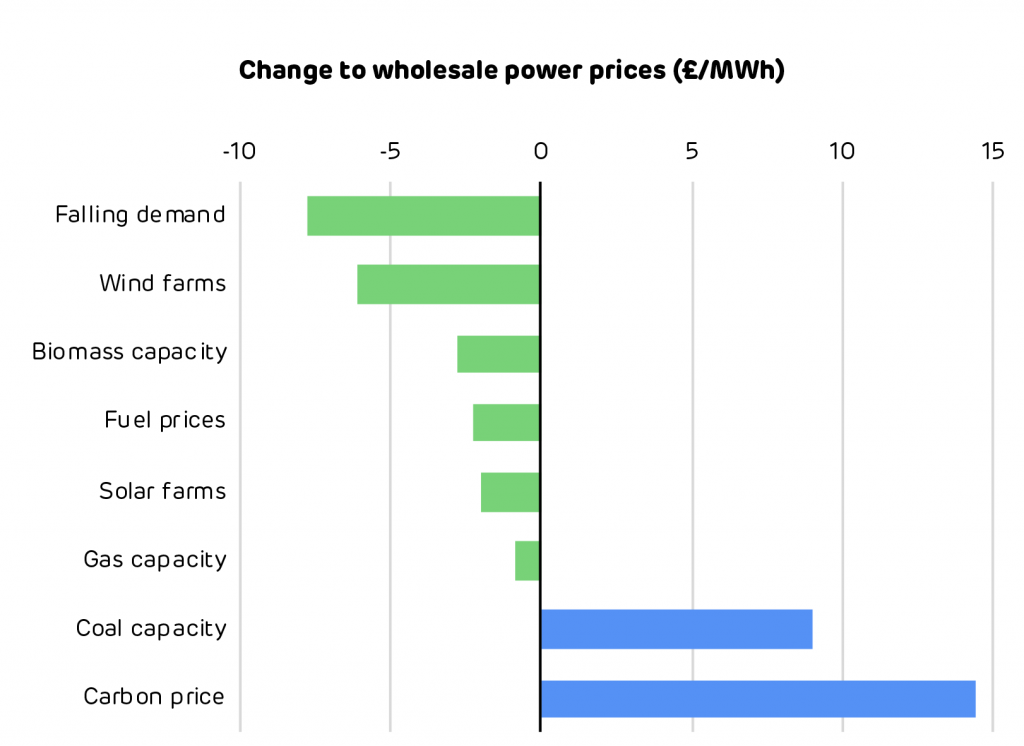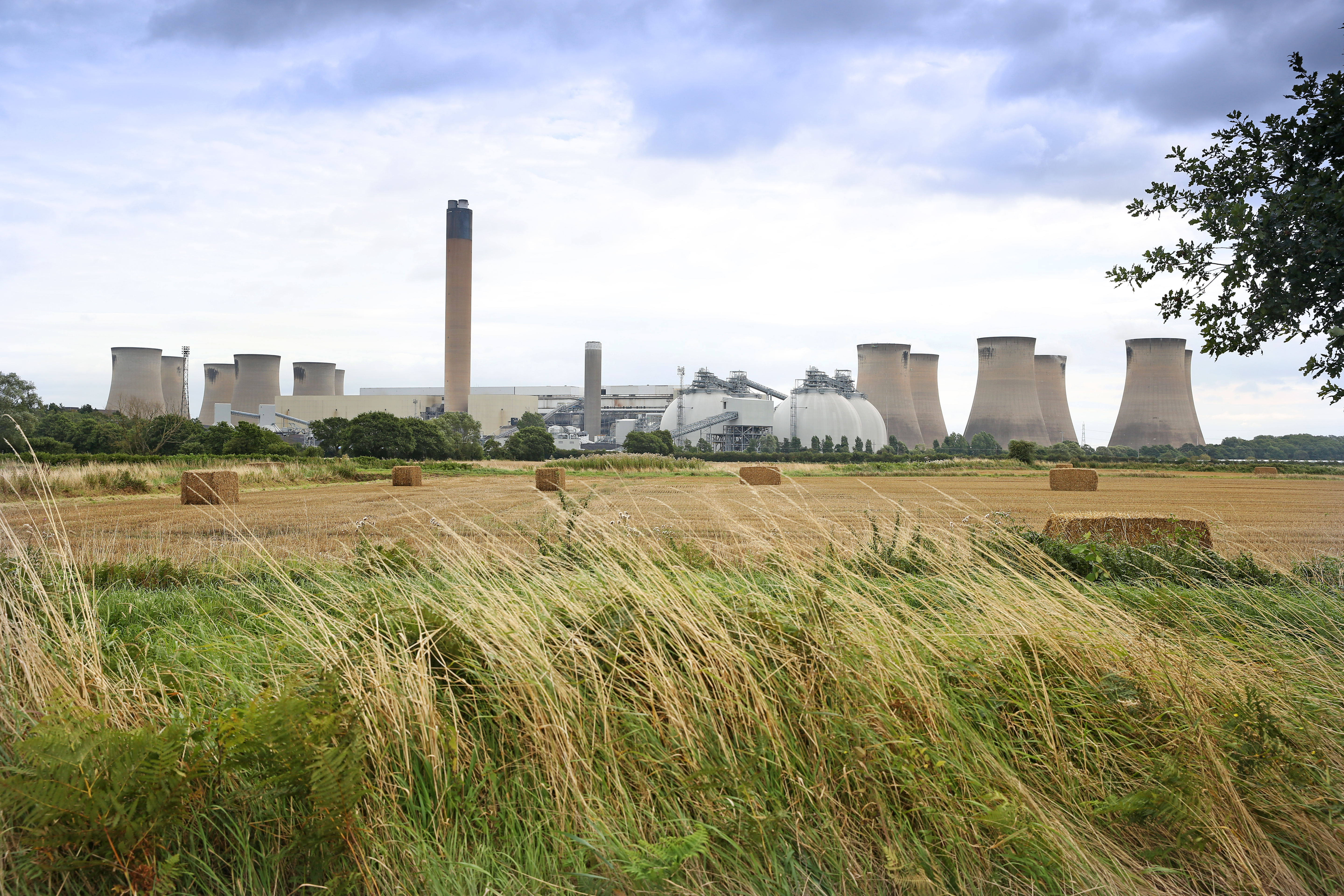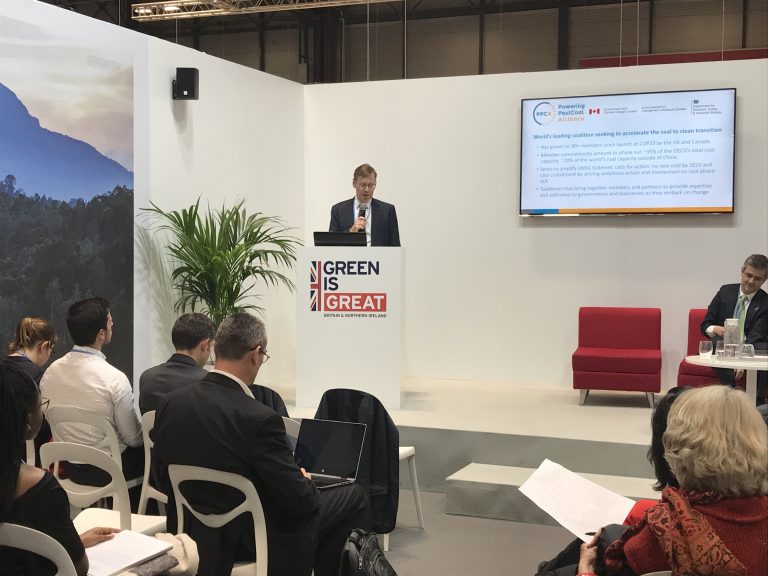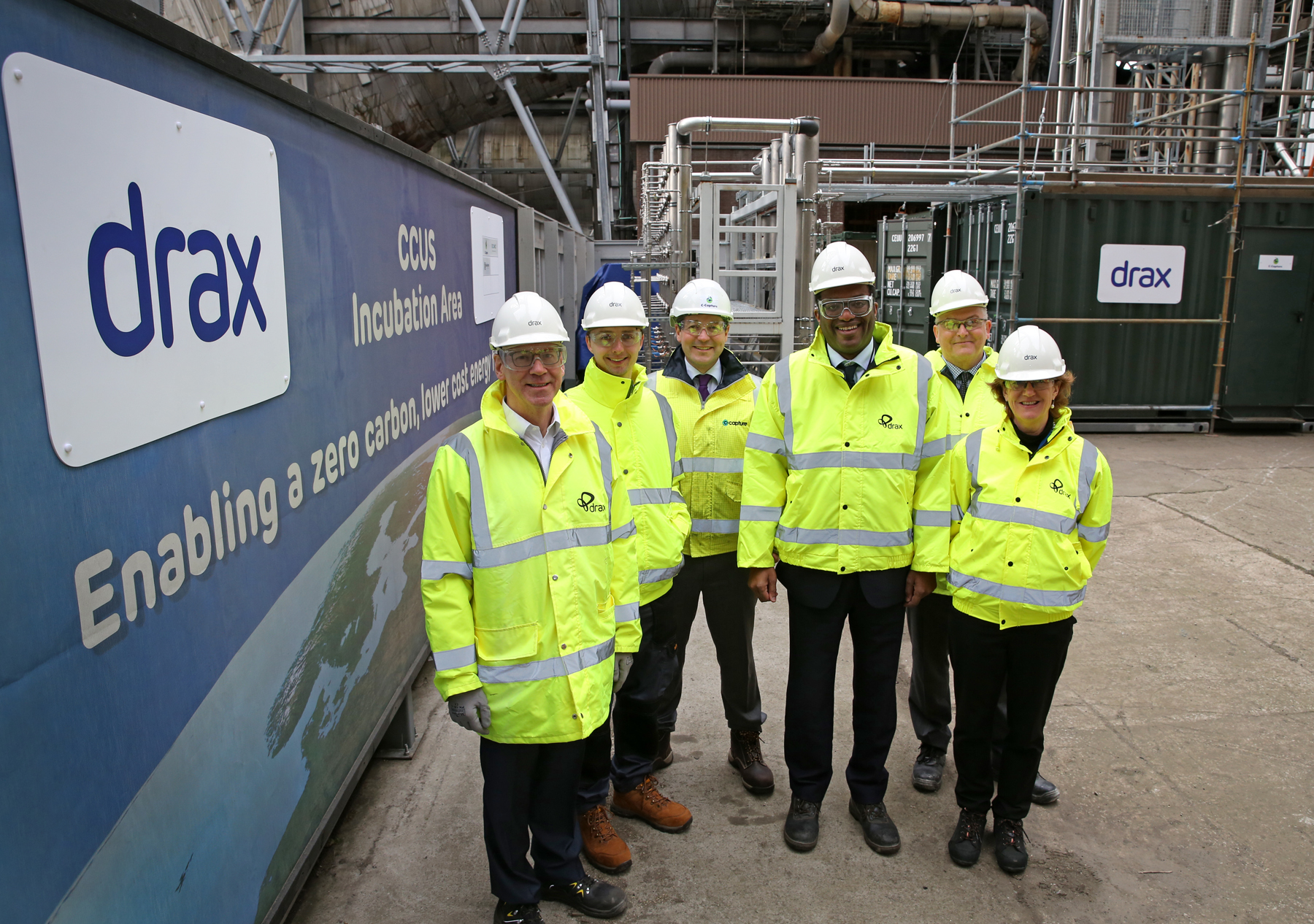
- Cleantech companies Econic Technologies and Deep Branch Biotechnology are the latest businesses to begin work with world-leader in negative emissions, Drax Group.
- The projects have the potential to use carbon capture utilisation and storage (CCUS) technologies to enable other sectors to decarbonise, making a significant contribution to UK efforts to address the climate emergency.
- UK Minister of State for Business, Energy and Clean Growth, Kwasi Kwarteng, visited Drax to hear more about its ambitious plan to become carbon negative by 2030 using ground-breaking bioenergy with carbon capture and storage (BECCS) technology – and met with some of the businesses it is working with on CCUS.
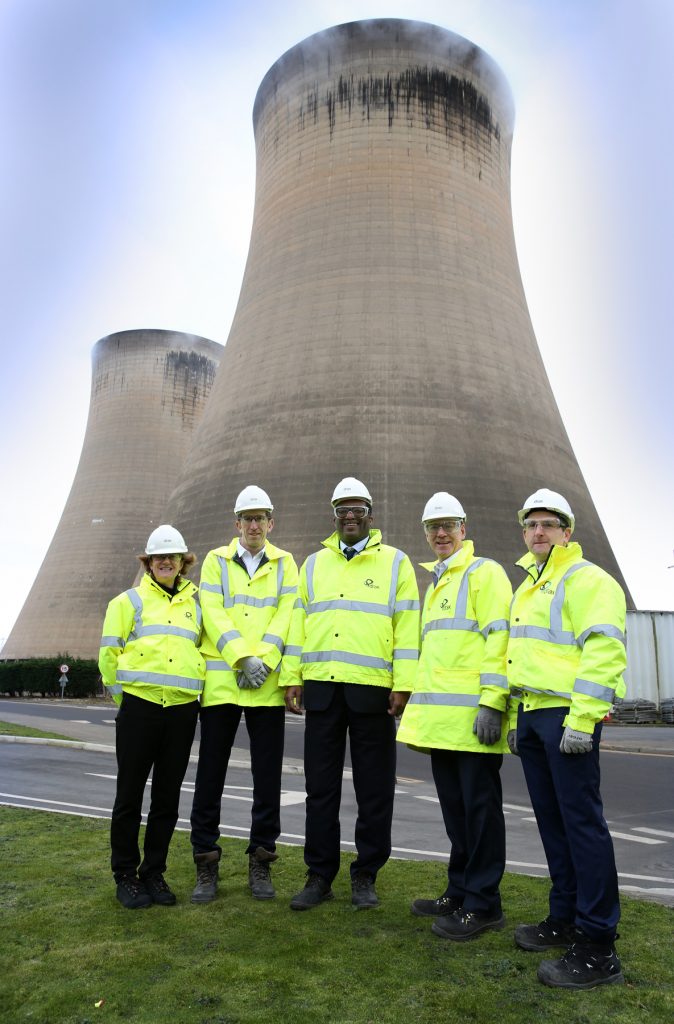
(Click to download) Clare Harbord, Jason Shipstone (both Drax) with Kwasi Kwarteng MP, and Will Gardiner Drax Group CEO and Andy Koss, Drax CEO Generation.
Negative emissions pioneer, Drax Group is continuing to develop ground-breaking carbon capture technologies through new partnerships and pilot projects, putting UK businesses at the forefront of efforts to tackle the climate crisis.
Drax has announced a new partnership with cleantech company Econic Technologies to explore the potential for using captured carbon dioxide from its biomass power generation to displace oil in the production of plastic products, using its pioneering catalyst technology.
The partnership marks a major step towards enabling other businesses, including in the automotive, consumer and construction sectors, to produce more sustainable polyurethane products. Econic’s catalyst technology could save as much as the equivalent of four million petrol cars’ worth of CO2 per year in this first market alone.
A new pilot plant has also been installed at the power station in North Yorkshire, by Deep Branch Biotechnology to explore the feasibility of using Drax’s CO2 emissions to make proteins for sustainable animal feed products – technology which could enable the agricultural sector to decarbonise.
The Rt Hon Kwasi Kwarteng MP, UK Minister of State for Business, Energy and Clean Growth visited the CCUS Incubation Hub at Drax Power Station, to see for himself the pioneering work taking place.
Drax was the first company in the world to announce an ambition to be carbon negative by 2030 when CEO Will Gardiner spoke at COP 25 in Madrid. By applying BECCS technology to its biomass generating units Drax would remove more carbon dioxide from the atmosphere than it produces across the whole of its operations, creating a negative carbon footprint for the company.
Will Gardiner, Drax Group CEO said:
“Drax’s ambition is to be carbon negative by 2030. Having pioneered the use of sustainable biomass, Drax now produces 12% of the UK’s renewable electricity. With the right negative emissions policy for BECCS, we can do much more, removing millions of tonnes of emissions from the atmosphere each year.
“By working with innovative tech companies like Econic and Deep Branch Biotechnology, we are exploring new opportunities for clean growth, which could be critical not only for beating the climate crisis, but also in enabling a just transition, protecting jobs across the North – delivering for the economy and the environment.”
Econic Technologies will test the CO2 being captured from Drax’s successful one tonne a day BECCS pilot at its own industrial pilot facility, to assess its suitability for producing polymers used in polyurethane plastics.
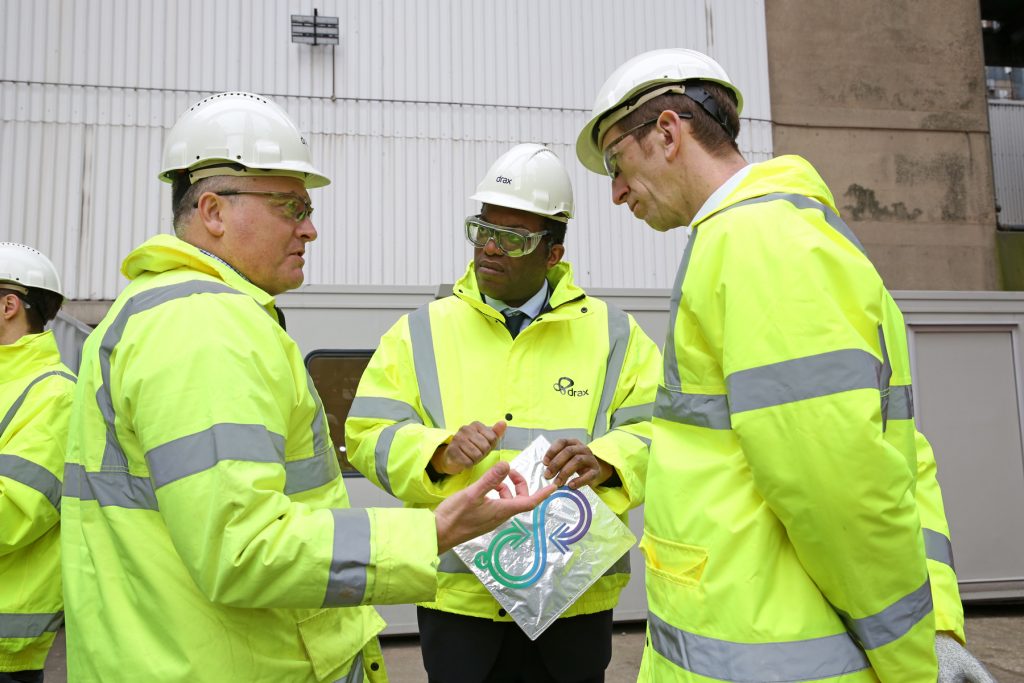
(Click to download) Leigh Taylor from Econic Technologies discussing the polyurethane products made using waste CO2 with Kwasi Kwarteng MP and Jason Shipstone, Drax VP Innovation
Dr Rowena Sellens, Econic Technologies CEO, said:
“Tackling climate change requires collaboration at all levels, and the Econic and Drax partnership is a significant step forward as industries establish viable, sustainable solutions. This project has the scope to unlock the endless potential of CO2 across a vast number of sectors. We’re confident that the CO2 being captured by Drax will be suitable for use in our process, meaning that we could move forwards to explore potential commercial opportunities together and accelerate the roll-out of both our technologies and their positive climate impact.”
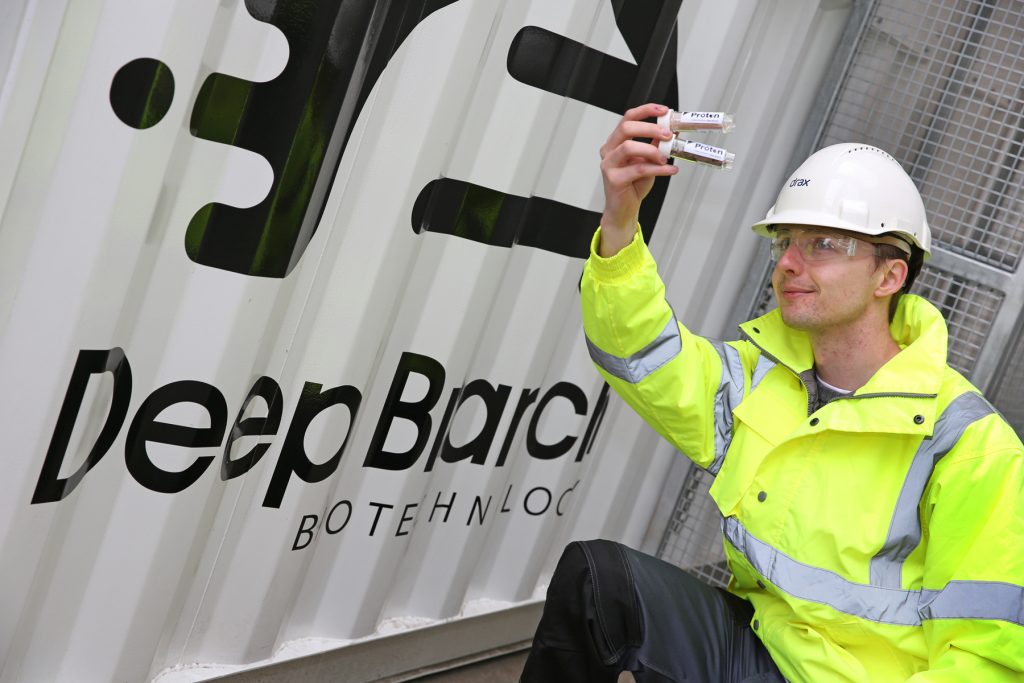
(Click to download) Robert Mansfield from Deep Branch Biotechnology, with samples of the protein it will produce using CO2 from Drax, outside the company’s new pilot plant within Drax’s CCUS incubation area
Drax is also working with a number of businesses to deliver a Zero Carbon Humber by 2040 – CO2 from Drax and other industrial emitters across the region, could be captured, transported and then stored under the North Sea creating the UK’s first zero carbon industrial cluster in line with UK government targets.
ENDS
Media contacts:
Ali Lewis
Drax Group Head of Media & PR
E: [email protected]
T: 07712670888
Aidan Kerr
Drax Group Media Manager
E: [email protected]
T: 07849090368
Editor’s Notes
Econic Technologies has pioneered a catalyst that allows bespoke amounts of CO2 to replace up to 50% of the traditional fossil fuel-based materials used in polymer production.
The polyurethanes produced have a wide range of uses, such as in producing products for the automotive sector, consumer goods, home furnishings as well as insulation for buildings.
Drax has installed storage cylinders to compress and store small quantities of the CO2 being captured from its successful BECCS pilot, which will enable Econic to test its suitability for use in its processes. These will be commissioned in the coming weeks. Once running they have the capacity to store up to 6kg of CO2 to enable testing to be carried out.
Businesses across the Humber region are supporting the Zero Carbon Humber campaign. As the most carbon intensive region in the country – the Humber would be able to make a more significant impact on addressing the climate emergency than anywhere else in the UK.
Drax is continuing work with C-Capture, using funding from the government’s CCUS innovation fund for work to test and validate the BECCS technology it is piloting. This is due to be completed later this year.
By applying BECCS technology to all four of its biomass generating units, Drax could capture and store 16 million tonnes or more of CO2 a year – a significant proportion of the UK’s target.
The UK Committee on Climate Change’s ‘Net Zero’ report states that BECCS could generate up to 173 TWh of electricity by 2050, capturing up to 51 million tonnes of CO2 – around half of the remaining carbon in the economy that the UK will need to capture to become ‘net zero’.
About Drax
Drax Group’s purpose is to enable a zero carbon, lower cost energy future. Its 2,900-strong employees operate across three principal areas of activity – electricity generation, electricity sales to business customers and compressed wood pellet production.
Power generation
Drax owns and operates a portfolio of flexible, low carbon and renewable electricity generation assets across Britain. The assets include the UK’s largest power station, based at Selby, North Yorkshire, which supplies five percent of the country’s electricity needs.
Having converted two thirds of Drax Power Station to use sustainable biomass instead of coal it has become the UK’s biggest renewable power generator and the largest decarbonisation project in Europe.
Its pumped storage, hydro and energy from waste assets in Scotland include Cruachan Power Station – a flexible pumped storage facility within the hollowed-out mountain Ben Cruachan. It also owns and operates four gas power stations in England.
Customers
Drax owns two B2B energy supply businesses:
- Haven Power, based in Ipswich, supplies electricity and energy services to large Industrial and Commercial sector businesses.
- Opus Energy, based in Oxford, Northampton and Cardiff, provides electricity, energy services and gas to small and medium sized (SME) businesses.
Pellet production
Drax owns and operates three pellet mills in the US South which manufacture compressed wood pellets (biomass) produced from sustainably managed working forests. These pellet mills supply around 20% of the biomass used by Drax Power Station in North Yorkshire to generate flexible, renewable power for the UK’s homes and businesses.
For more information visit www.drax.com
About Econic Technologies
Econic Technologies is a British cleantech company that has pioneered catalyst technologies for utilisation of Carbon Dioxide (CO2) in place of conventional oil-based feedstocks. Its tailored catalyst systems enable the utilisation of captured CO2 as a feedstock for manufacturing polyols, a precursor of plastics like polyurethanes, on an industrial scale.
In 2018, Econic Technologies received investment from OGCI Climate Investments, a voluntary initiative led by CEOs of 13 global oil and gas companies, which invest in promising technologies and business models that can significantly reduce greenhouse gas emissions and that are commercially viable and scalable. In 2019, Econic was also named on the prestigious Global CLEANTECH 100 list. These developments follow investment from the likes of IP Group plc and Jetstream Capital, as well as a Horizon 2020 SME award secured in 2016, which have helped the company accelerate the commercialisation of its catalyst technologies.
The company operates globally from Alderley Park, near Manchester, UK and its state-of-the-art customer demonstration facility in Runcorn, UK, which has seen 60 customers visit since opening in March 2018. Econic Technologies is working with global polyol producers across North America, Europe and Asia as part of a programme to accelerate adoption of its catalyst technologies across these territories.
Founded in 2011 by Charlotte Williams, now Professor at Oxford University, and David Morgan, formerly Executive Director of FTSE 100 catalyst company Johnson Matthey plc, Econic’s unique technologies allow bespoke amounts of CO2 to be used (up to 50%) as a raw material in the manufacture of polyols with enhanced properties for value added products. This enables producers to benefit from substantial raw material feedstock cost savings and achieve significant environmental benefits from both CO2 utilisation and reduced CO2 emissions, while also enabling the potential for economic gain via an ability to offer enhanced product performance to users.
About polyols
Polyols are the building block for polyurethanes and are used in the production of flexible and rigid foams, elastomers, adhesives, sealants and coatings. Industry sectors include: automotive, footwear & apparel (e.g. sports trainers), furniture (sofas, mattresses etc), appliances (e.g. fridges) and construction (insulation panels, coatings etc). The global polyols market is valued at $24Bn and is growing.
